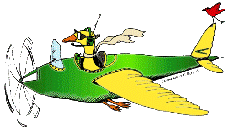Bird Strike Committee Proceedings
Date of this Version
10-24-2002
Document Type
Article
Abstract
A High-intensity Acoustic Bird Dispersion System (HIABDS), invented by Professor Xi Baoshu, is a new nonlethal device for dispersing birds from airports and other locations. The device employs a unique electro-pneumatic loudspeaker which can amplify recorded wildlife vocalizations or artificial sounds of varying frequencies to high power levels and project them over long distances. The sound pressure reaches 135 dB at 10-m distance. In China, HIABDS is being used at Lanzhou Airport to disperse upland buzzards (Buteo hemilasius), whose numbers declined by 80% after 1 year of deployment. During 2001-2002, HIABDS was used at Tianjin Binhai International Airport to keep over 1,000 crows outside of runway area and at Beijing Capital International Airport during a visit by President George W. Bush. In the USA, field evaluations of HIABDS were conducted in Ohio at Burke Lakefront Airport and other sites in 2001. We recorded the response of various bird species to 6 sounds (synthetic and recorded distress calls) broadcast from the HIABDS. Turkey vultures (Cathartes aura) exposed to sounds from the HIABDS at 200 m dispersed from a nighttime roost, but 12 of 13 vulture groups were unaffected while soaring or perched during the day. In contrast to vultures, red-tailed hawks (Buteo jamaicensis) dispersed in 18 of 24 exposures to sound from the HIABDS. All 15 flocks of gulls (Larus spp.) within 300 m of the HIABDS dispersed whereas none of 11 flocks beyond 300 m dispersed. For Canada geese (Branta canadensis), 3 of 5 tests with a goose distress call caused dispersal whereas none of 8 tests with other sounds generated any reaction, even at 75 m. Mallards (Anas platyrhynchos) showed no reaction to any of 4 sounds in 14 of 15 tests within 300 m. European starlings (Sturnus vulgaris) showed a strong dispersal response to a synthetic clicking sound when broadcast within 300 m of the flock. Caspian terns (Sterna caspia) ignored the 4 sounds evaluated. In conclusion, sounds broadcast from the HIABDS were effective in dispersing certain species, depending on the sound used and distance of birds, whereas other species were generally unresponsive to any sounds at any distance. These findings point out the complexity of dispersing birds depending on species, behavior, and time of year. Our findings indicate that the HIABDS can be used to disperse certain birds and that such a system might be useful as part of an integrated wildlife hazard management program for airports. We recommend that a HIABDS-equipped vehicle be provided to one or more airports in North America for evaluation by the airport’s wildlife control officers. This will allow for a practical evaluation of the HIABDS under field conditions and further assess the performance of the system.


